Features
Wakeboard Stance Essentials: How to Position Yourself
By Skier's Choice Marketing/ February 18, 2025
SHARE
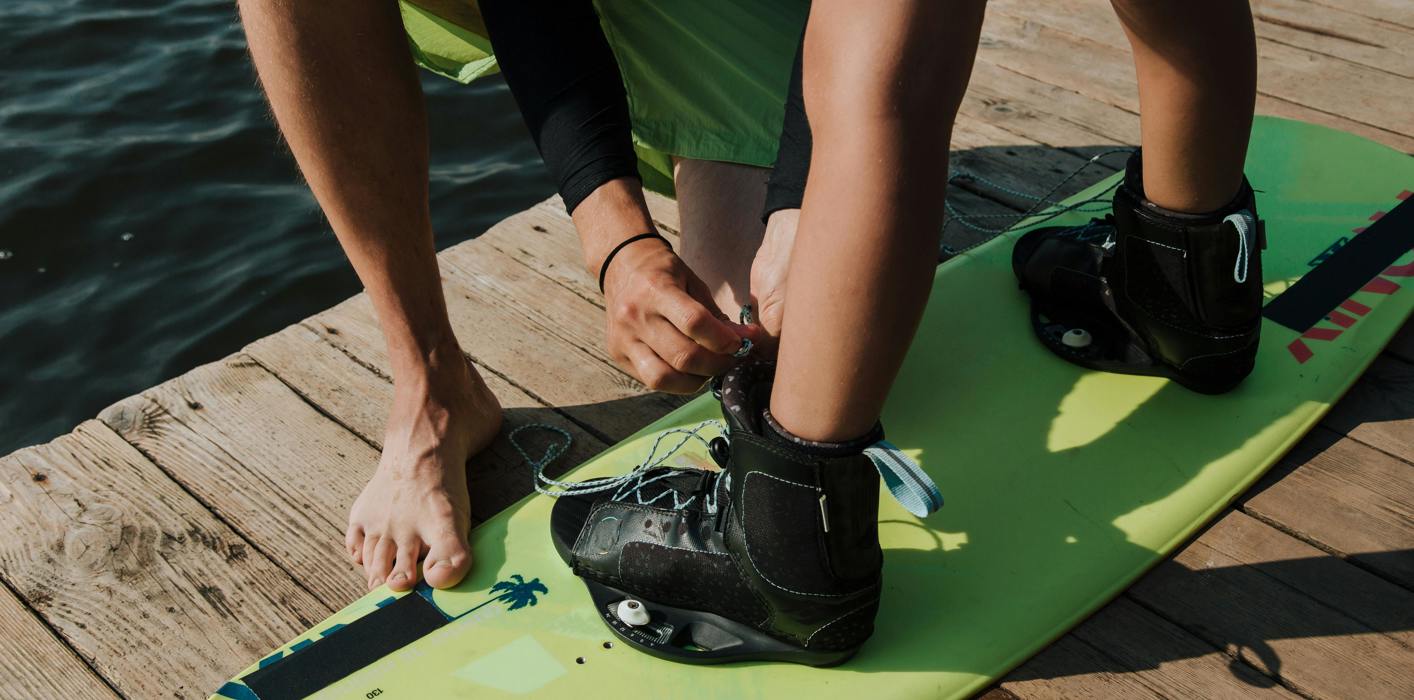
Your stance on a wakeboard lays the foundation for every ride, whether it’s your first time on the water or you’re perfecting that next big trick. From finding the right balance and stance width to adjusting your bindings, positioning yourself well enhances control, stability, and comfort. This guide covers essential tips and insights to help you master your wakeboard stance and make the most of your Supra wakeboarding experience.
Determining Your Dominant Foot: Regular vs. Goofy Stance
Knowing your dominant foot sets the foundation for balance and control on your wakeboard. This determines whether you’ll ride in a regular stance (left foot forward) or a goofy stance (right foot forward).
Finding Your Dominant Foot
A quick way to discover your dominant foot is the “push test.” Stand naturally, and have a friend gently nudge you from behind without warning. The foot you instinctively step forward with is likely your dominant foot and should lead on your wakeboard. If you step forward with your left foot, you’re regular; with your right foot, you’re goofy. Avoid anticipating the push to ensure a natural response.
Why Your Dominant Stance Matters
Aligning your stance with your natural lead foot creates a solid base for balance and control, enhancing your comfort on the water. As you grow familiar with Supra’s high-performance handling, this foundation lets you ride with confidence, preparing you for advanced skills.
Finding the Right Stance Width
With your stance set, the next step is determining your ideal stance width. Typically, a shoulder-width stance balances stability and maneuverability, but individual adjustments can enhance control.
Adjusting for Comfort and Control
A shoulder-width stance works well for most riders, but consider your body type for added comfort:
-
Taller Riders: A wider stance can improve stability.
-
Shorter Riders: A narrower stance may offer more control.
Supra pro tip for new riders: Try experimenting with different stance widths at a slower speed to find your ideal setup.
Setting Up Your Wakeboard Bindings
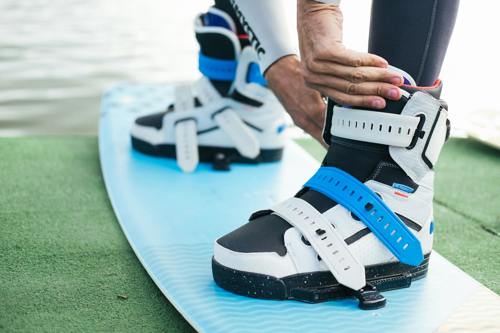
Wakeboard bindings connect you to the board, impacting stability and comfort. Proper setup ensures a secure stance, reducing fatigue and improving control on every ride.
Wakeboard Bindings: The Basics
Your bindings are your direct link to the board, providing the stability you need for precise control and tricks. Positioning them correctly keeps you grounded and ready for any maneuver.
Placement Tips for Optimal Performance
Position bindings at shoulder width apart on the board, adjusting them to match your natural stance. Beginners may find a slight angle more comfortable, while more advanced riders often prefer an outward “duck” angle for added flexibility. Fine-tuning your binding placement can noticeably improve control and comfort.
Supra’s Recommendation for Bindings Setup
Supra’s wakeboards come with premium bindings that prioritize flexibility and stability, making it easy to adjust your stance width and experiment with angles. Contact your gear manufacturer for further details and recommendations.
Stance Angles: Experimenting with Duck Stance
For many wakeboarders, the duck stance—where feet are angled outward—offers enhanced control and versatility, especially during switch riding and tricks.
What is Duck Stance?
In a duck stance, each foot outward at equal degrees, creating a stable platform for smooth transitions. This setup is popular among riders who enjoy switch riding, as it allows for smooth transitions between regular and goofy stances.
Finding Your Ideal Angle
Most riders start with a 15-degree angle on each binding, adjusting as needed for comfort and control. Experimenting with slight adjustments can help you find the sweet spot where you feel most secure.
Fine-Tuning for Different Riding Styles
Each wakeboarding style benefits from slight adjustments to stance width, wakeboard bindings, and angles.
For Beginners
Begin with comfort and balance. A neutral stance, with bindings shoulder-width apart and a slight duck angle, provides stability and builds confidence on the water.
Intermediate and Advanced Riders
As skills develop, experimenting with a wider stance or more pronounced duck angle enhances stability and control for tricks and higher speeds. Advanced adjustments to bindings support a more aggressive riding style.
Switch Riding Tips
A symmetrical duck stance helps riders who frequently switch between regular and goofy stances, making transitions and tricks smoother.
When to Adjust Your Wakeboard Stance
As you gain experience, your stance preferences will evolve. Being mindful of how your stance affects comfort and control will help you know when it’s time for a change.
Signs it’s Time to Adjust
-
Discomfort or Strain: Knees or ankle discomfort may signal a need to adjust bindings or stance angle.
-
Control Issues: Difficulty managing the board, particularly at high speeds or during tricks, suggests that you need to modify your stance.
-
Frequent Switch Riding: If you’re regularly riding switch, a symmetrical stance can help improve balance and flexibility.
As your skills advance, minor adjustments to your stance can enhance performance.
Putting It All Together
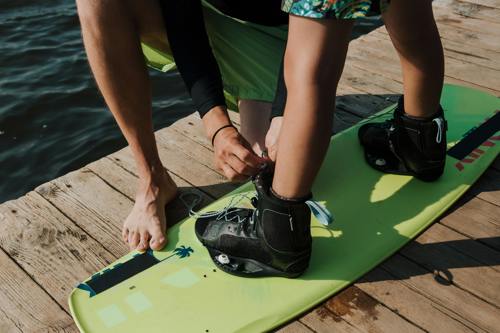
Perfecting your wakeboard stance takes time and experimentation, but the right setup transforms your experience on the water. Finding your ideal stance is key to building confidence and mastering new skills, allowing you to progress with control and comfort.
Ready to optimize your Supra wakeboarding experience? Schedule a demo today to discover how Supra’s features make every ride extraordinary.
SHARE

About Author
Skier's Choice Marketing
Skier's Choice Marketing Team
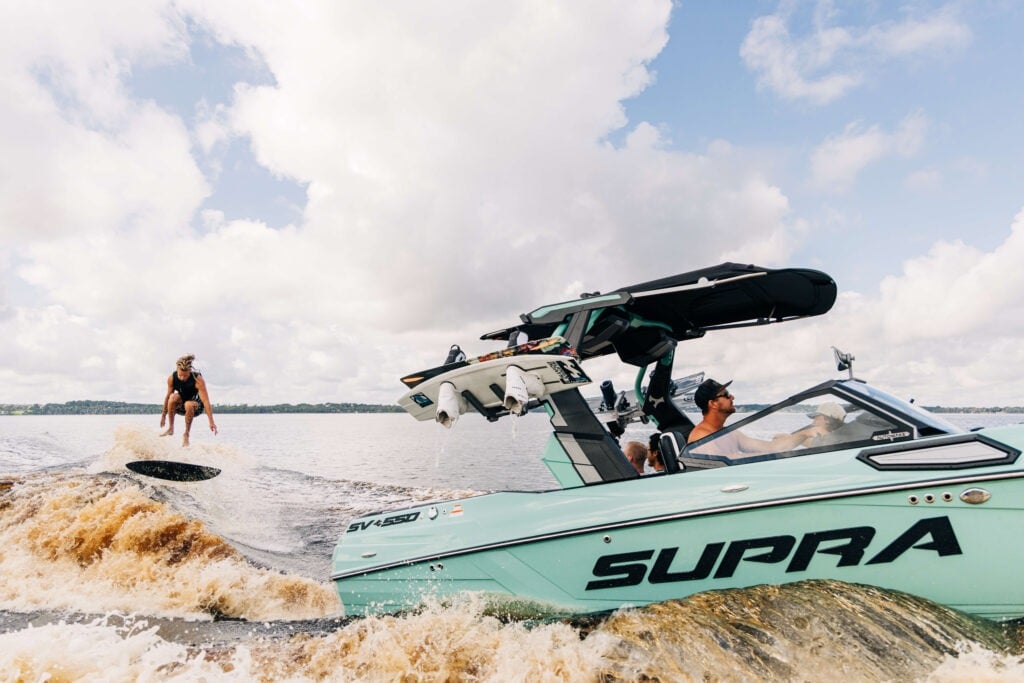
The Ultimate Guide To Choosing the Right Wakesurf Board
Wakesurfing is all about balance, flow, and performance, but choosing the right wakesurf board can make all the difference in your riding experience. Whether you're a beginner looking for stability or a seasoned rider dialing in your style, the right board will help you maximize control, speed, and maneuverability behind the boat.
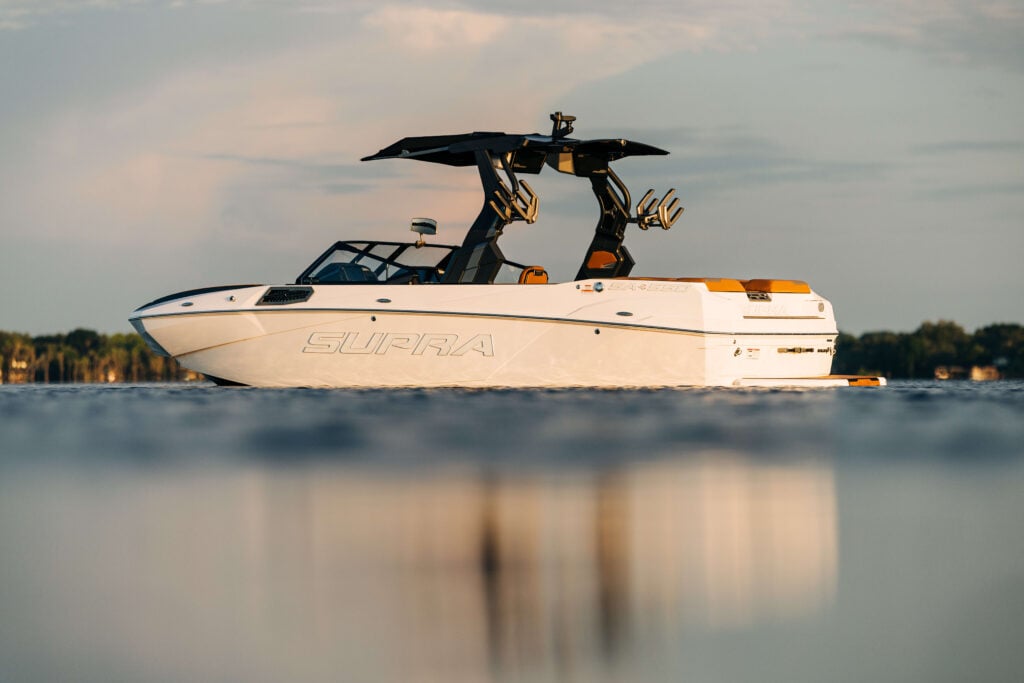
Your Boat Trade-In Value: What to Expect and How to Prepare
Trading in your boat can be a great way to upgrade without the hassle of a private sale. Whether you’re stepping up to a newer model or finding one better suited to your lifestyle, understanding the trade-in process can help you get the most value for your boat. Here’s what you need to know to prepare, estimate your boat’s worth, and make the trade-in process as smooth as possible.
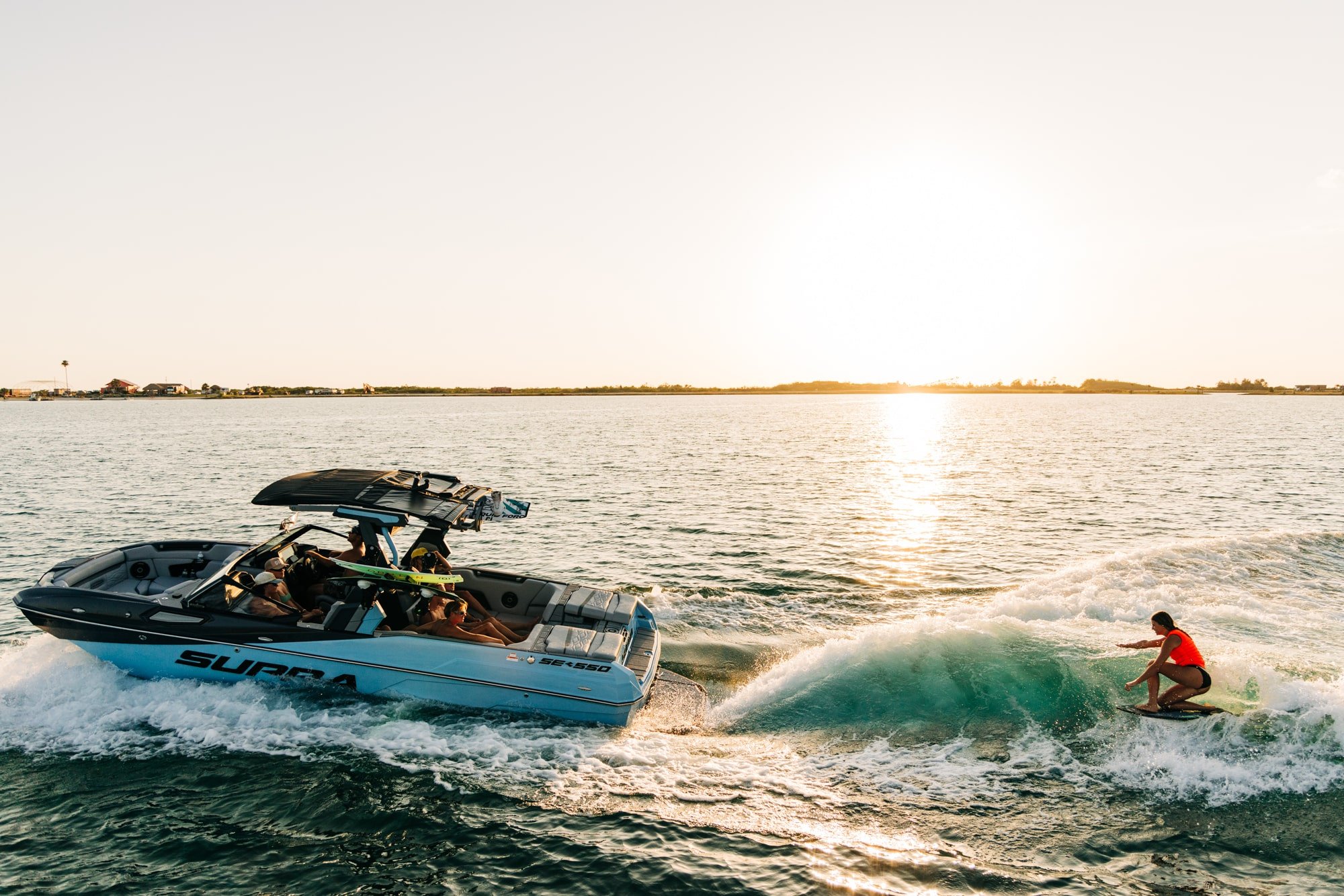
Supra Boat Dealership in Minnesota
Supra Boats, renowned for high-performance engines, luxurious interiors, and innovative wake-shaping technology, caters to water sports enthusiasts in Minnesota through our award winning dealers. Whether wakeboarding or wake surfing, find the perfect boat from a trusted Supra Boats dealer in MN.
